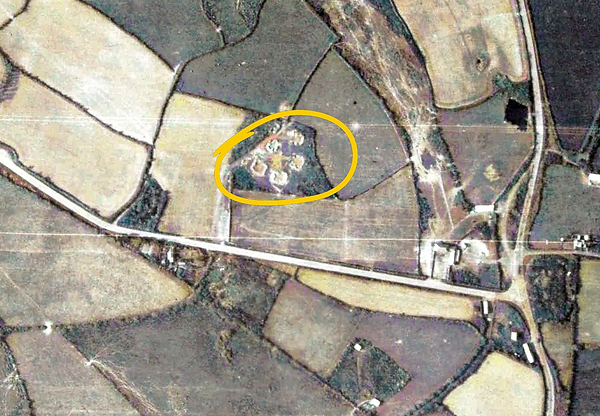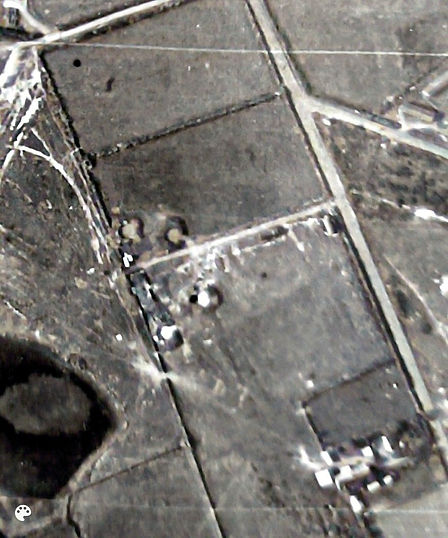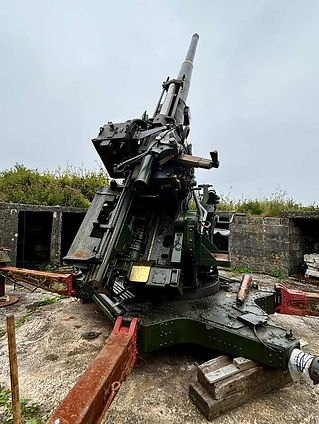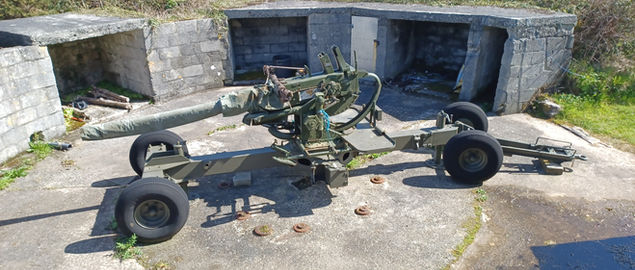
About Us

Predannack Heavy Anti-Aircraft Battery

RAF Predannack & It's Defenses
RAF Predannack became operational in May 1941 and almost immediately the Nazi’s had their eyes all over what they believed to be called Mullion Airport.
Although Germany believed the site to be incomplete, it had marked out the boundaries of the airfield, along with key targets such as the hangars, runways, and ammunition sheds, by July 1942.

Predannack, as a satellite and backup airfield to RAF Portreath on the North coast, was still quite heavily protected. Predannack had no less than eight 20 mm Light Anti-Aircraft batteries around the airfield’s perimeter, each self-sufficient with its crew rooms and facilities.
Local building firm Trethowans of Constantine was appointed as the main contractor, assisted by the No.1 area (field) of the RAF works service. Between 1941 and 1944, 344 buildings were built or rebuilt, in addition to the runways, aircraft standings and dispersal areas and many miles of cables and pipework were laid.
There is little left of the 1940s infrastructure on the airfield itself, and there are even a couple of buildings earmarked for demolition in the near future, such as the lubricants store not far inside the front gates.
The arrival of the Americans in 1942 added to the administrative problems; it wasn’t the increase in personnel but the increase in weight of the equipment. American Planes were simply bigger and heavier, and the mud became a problem. Typically, the Americans also had a large solution to the problem.
An excerpt from the base diary dated 16th Nov 1942 reads;
“To assist us in moving a quantity of hard core the Americans today loaned us one of their large Lorries and this was found to be the most suitable vehicle for this work as, owing to its six wheel drive, it was able to cross land which would have been quite impossible for an English vehicle”
Initially, people arrived far quicker than the aircraft, stores, equipment, and, more importantly, anywhere to house all the new serving personnel. The base diary mentions a shortage of various equipment, including slipper baths for the WAAFs. The arrival of No. 5 troop of No. 483 searchlight battery and a troop of 97 LAA battery added to the difficulties of the accommodation considerably, but by Christmas of 1941 messes were completed for Christmas meals of all ranks, the officers were in the Polurrian Hotel at Mullion requisitioned as a mess, with NCO’s and other ranks in base accommodation.
The majority of the complement of 2892 personnel were not aircrew; their battle was with the harsh weather of such an isolated and exposed station and maintaining the 97 aircraft of various types by 1944.
The arrival of almost 3000 personnel in a secluded rural location must have been a shock to residents, considering the Lizard village housed approximately 500 people at the time. The accommodation and amenities for the base spanned the main Lizard Road, causing problems with civilians entering restricted areas and speeding along the road. The base diary contains notes about erecting 20mph signs to encourage the locals to slow down, but some things don’t change.
Planes stationed at Predannack flew a variety of different missions, fighter patrols, night fighter interceptions and a large amount of anti-shipping duties in the western approaches and the Bay of Biscay. Due to its most Southerly location, Predannack was also ideally placed for flights to Gibraltar and North Africa, the USAAF used it as a staging post for the transfer of aircraft to its twelfth air force in North Africa, as the closest English airfield on the long southern ferry route from the states, it was used by the eighth air force to transfer their B17’s and B24’s across the Atlantic during winter months.
As the war progressed through Europe, Predannack became quieter; it was still the home to various fighter squadrons and was busy with anti-shipping patrols until the end of the war.
Just like RAF St Eval and Portreath on the North Coast, and many other airfields around the country, there would always be at least two Heavy Anti-Aircraft batteries protecting the airfields, and Meaver Battery, lost until recently, is one of the two that were built to protect Predannack.
Operated by the Royal Artillery, Meaver is of the later design from September 1943 and depicts a round or square gun pit with the magazines protruding into the centre of the pit.
Meaver was not visible on the Luftwaffe’s maps from July 1942, so it reinforces the knowledge that this was the 1943 design of the battery.
All that is left today are some of the foundations of supporting buildings, but nature has reclaimed the site back to a pre-war state.

Meaver HAA Battery | 1946
The primary form of defense for the airfield was Predannack Heavy Anti-Aircraft Battery on the North East side, and this battery does still stand proud and intact to this day.
The museum's displays and artifacts contain the memories of the men and women who served in and around RAF Predannack during the war, and we are currently operating three original wartime HAA guns on site.
The Luftwaffe identified the Predannack battery as FLAK by 1942, and the date of this identification is shown as the battery's design is the earlier 1941 pattern.

Predannack HAA Battery | 1946
By the start of World War Two, although many of the early anti-aircraft designs were still in service and continued throughout the war, they were becoming obsolete and were being replaced in front-line service by more modern designs that were more powerful and could fire at a faster rate.
The main British and Commonwealth Heavy Anti-Aircraft gun became the Vickers 3.7’’ AA gun, a gun every bit as powerful, accurate and deadly as the more famous German ‘’88’’, with light AA artillery being dominated by the Swedish designed Bofors 40mm L40/60, a gun made under licence or copied by nearly all combatants and still in limited service today, we have three examples of the 3.7’’ at the battery, and several examples of the Bofors Light Anti-Aircraft Gun.

3.7" H.A.A Gun, One of two prototypes made with an Abbot Barrel

3.7" H.A.A Gun

3.7" H.A.A Gun MkII, 1943

40mm Bofors L60
Our site, a 1941 pattern Heavy Anti-Aircraft battery, consists of four-gun pits, with each one being supported by a Vickers-designed 3.7’’ Heavy AA gun. Each gun would be bolted down to hold-fasts buried deep in concrete, and include ready use ammunition storage along with two crew shelters per gun, which housed the gunners close to the guns.
We also have evidence of two Nissen huts on site, which were possibly used as a guard room and a repair shop.
Predannack Anti-Aircraft Battery & Museum also features several guns that were not on site during World War II, but make up part of the larger collection of original artillery pieces we have.

5.5" Gun Howitzer | Calibre, 140mm | Range: 14km (15,300 Yards)
Came into service in 1942 in the Western Desert of North Africa against Rommel's Afrika Korps.
